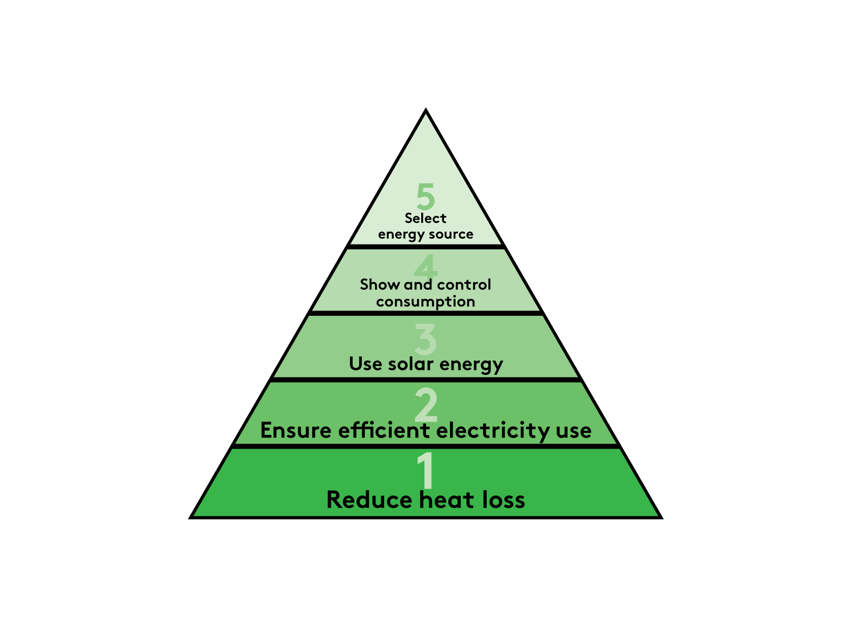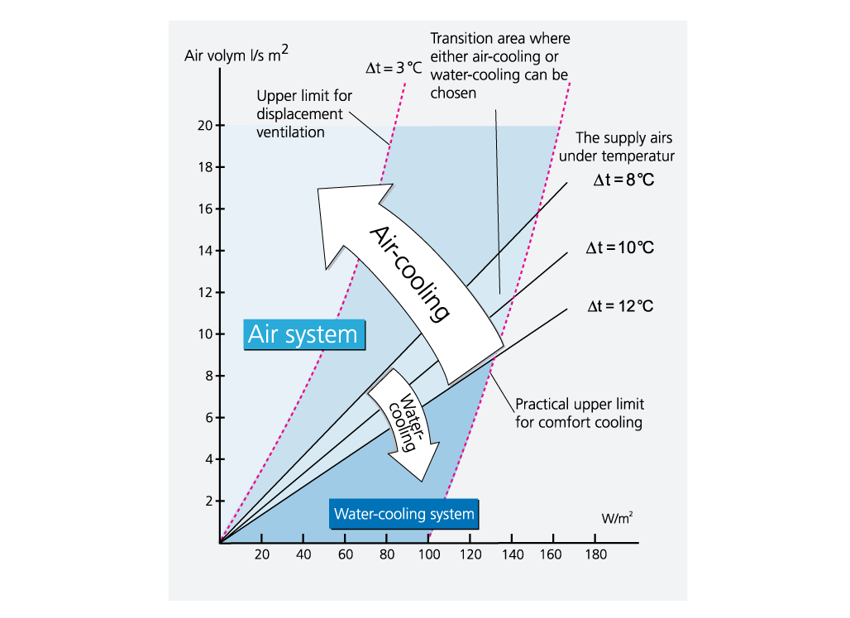How to adjust temperature in buildings
Identify the requirements
When choosing an indoor climate solution, it is helpful to determine the demand for heating and cooling. It may, for instance, be made by using ESBO simulation software. Once the demand has been established, a solution may be selected and scaled to match the identified requirements.
The Kyoto Pyramid is helpful in determining the sequence of the various measures needed to achieve a good building energy performance. The most energy-efficient method to control temperature is to construct buildings where the demand for heating or cooling does not arise. This is the base of the Kyoto Pyramid. Potential adjustments may be to fit extra insulation and premium glazing in the premises as well as providing the building with a demand controlled sunscreening which can prevent heat loss in winter and excessive heating in summer. Roof eaves which provide shade in summer when the sun is high, but let in light in winter when the sun is low may be seen as another way of demand controlled sunscreening.


Different methods for heating or cooling a room
Heating or cooling a room to achieve the ideal temperature may be done by either an airborne or a waterborne system. What makes water the ideal medium for heating or cooling is that waterborne systems take up less space as water is a more efficient energy medium than air. As a result, both air handling unit and duct system will be less bulky. If air is instead chosen for distribution, there will be a less advanced solution provided, scaled for large air volumes with the option of using free cooling.
In sum, a number of factors determine which core system to opt for. The investment, aesthetic and practical considerations all need to be factored in. The graph on the left exemplifies how to make an estimate of which system to choose.
Learn more here